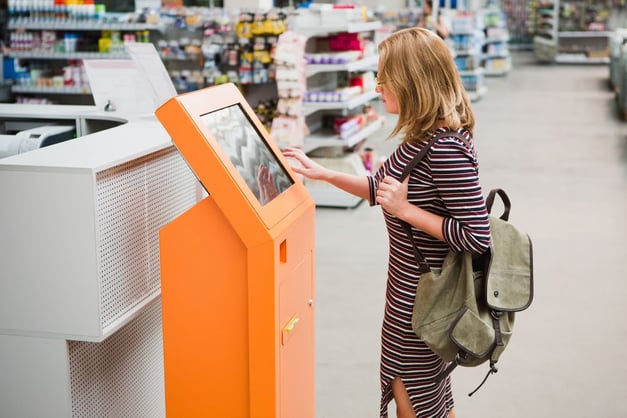
Kiosks are a great way to automate operations. Many distributed architectures leverage kiosks to reduce costs, improve processes, or enhance customer experience. From informative kiosks to retail, thanks to Covid-19 and the pandemic, more companies have started to add these tools to their business strategies. If you want to read more about distributed architectures, visit this post. However, to succeed at including kiosk in your business, you will face several challenges. In this blog post, we will review some of the most common issues you might encounter.
Hardware
Hardware is one of the first challenges. Correctly determining customer needs will facilitate choosing the appropriate hardware for the kiosk. You need to look at software complexity, number of apps that must be run, required memory and storage, operating system, size. You can read more on how to leverage an embedded system architecture to source hardware in this post. You want to avoid oversizing components which will increase overall cost of the system and under sizing hardware which might produce negative user experiences.
Power
Will the kiosk be connected to a stable power supply 100% of the time or will it have batteries? This question will help you determine what hardware and display you will install in the application. This aspect can be taken for granted and lead to failures or downtime which translates into money losses. If you are choosing batteries, make sure you source high quality devices and include a monitoring solution along with a charging strategy.
Input Devices
Self-service kiosks will often have any of the following input devices: EID, RFID, fingerprint scanner, passport scanner, facial recognition cameras, barcode readers, etc. These devices are usually included in the project requirements, as they are key for solving customer needs. One of the issues with input devices is finding a hardware manufacturer that can source them and offer you 100% compatibility with your system.
Operating System
Depending on the application, you will choose the operating system. Two operating systems for kiosks are Linux and Android. The operating system will determine how flexible the overall system will be, the processing capabilities to some extent, the required staff expertise to develop and maintain the solution, and the overall control your IT staff will have on the hardware. You can read more about if Linux or Android will work best for your application in this post.
Security
Kiosks require physical and virtual security. This equipment is typically installed outside restricted facilities and many different people (consumers and employees) have access to them. This means that they can be tampered with or be subjected to vandalism. When developing the system, you will need to specify the level of physical security thanks to enclosures or fastening, along with physical cybersecurity features like TPMs. You can read more about hardware cybersecurity features in this page and you can read more about security from the Android perspective in this post.
Displays
Nowadays most kiosk allow user interaction with corporate systems thanks to PCAP touch displays. Projected Capacitive (PCAP) touch offers improved optical clarity and scratch resistance. In fact, the latest PCAP touch technology leverages hardware and firmware to avoid noise interference at different frequency bandwidths which improves touch accuracy detection. Remember that in some kiosk applications you will need to include sunlight readability displays and water or dust protections. Finally, you might require a specific display size or an open frame display to fit the specific space in your system. This is important because in some applications there might be some industry standard in terms of size, like airports, but in others you might be looking to offer a unique customer experience, like in retail.
Customization
If you are looking at creating a unique and memorable experience for your users while improving brand recognition, your kiosk will need customization: starting at the board level up to the software. In this case you want to partner with experienced manufacturers and developers which can help you source commercially available components at the prototyping stages and help you make the jump to mass production with customized components, designed to work together as a system to build your brand.
Remote management and monitoring
As kiosks will be distributed in different locations, you need to think about remote management and monitoring solutions since the design phases. You need to make sure kiosk will be used for the intended purpose. You will also need push updates and troubleshoot problems remotely to keep costs in check and to keep revenue increasing. You can read more about remote management and monitoring by bridging hardware and software in this post.
Most of the challenges mentioned in this post can be overcome by partnering with an experienced hardware manufacturer and a knowledgeable DevOps company to bridge hardware and software and develop a holistic kiosk solution. If you want to continue reading about distributed architectures, visit this page.